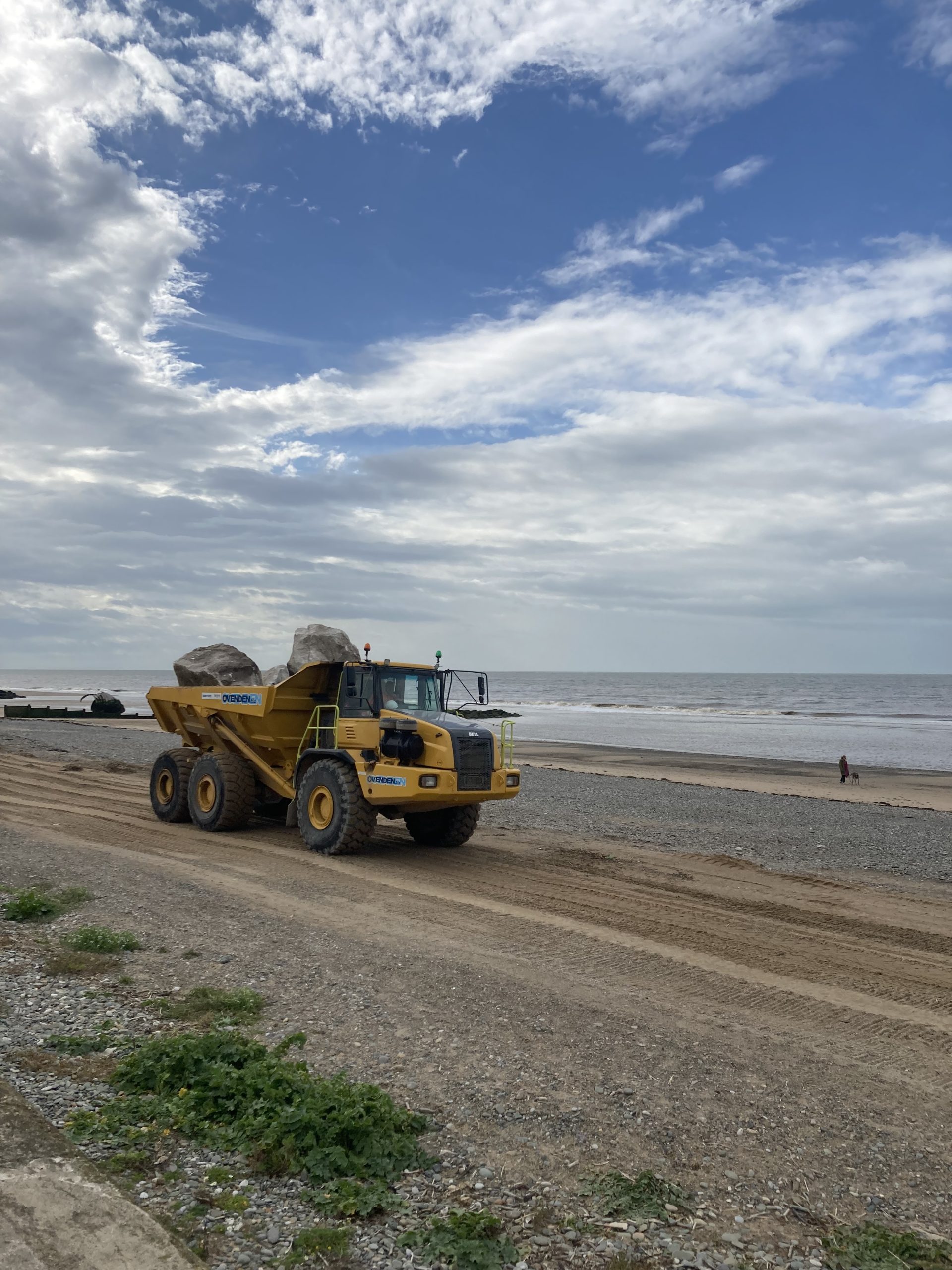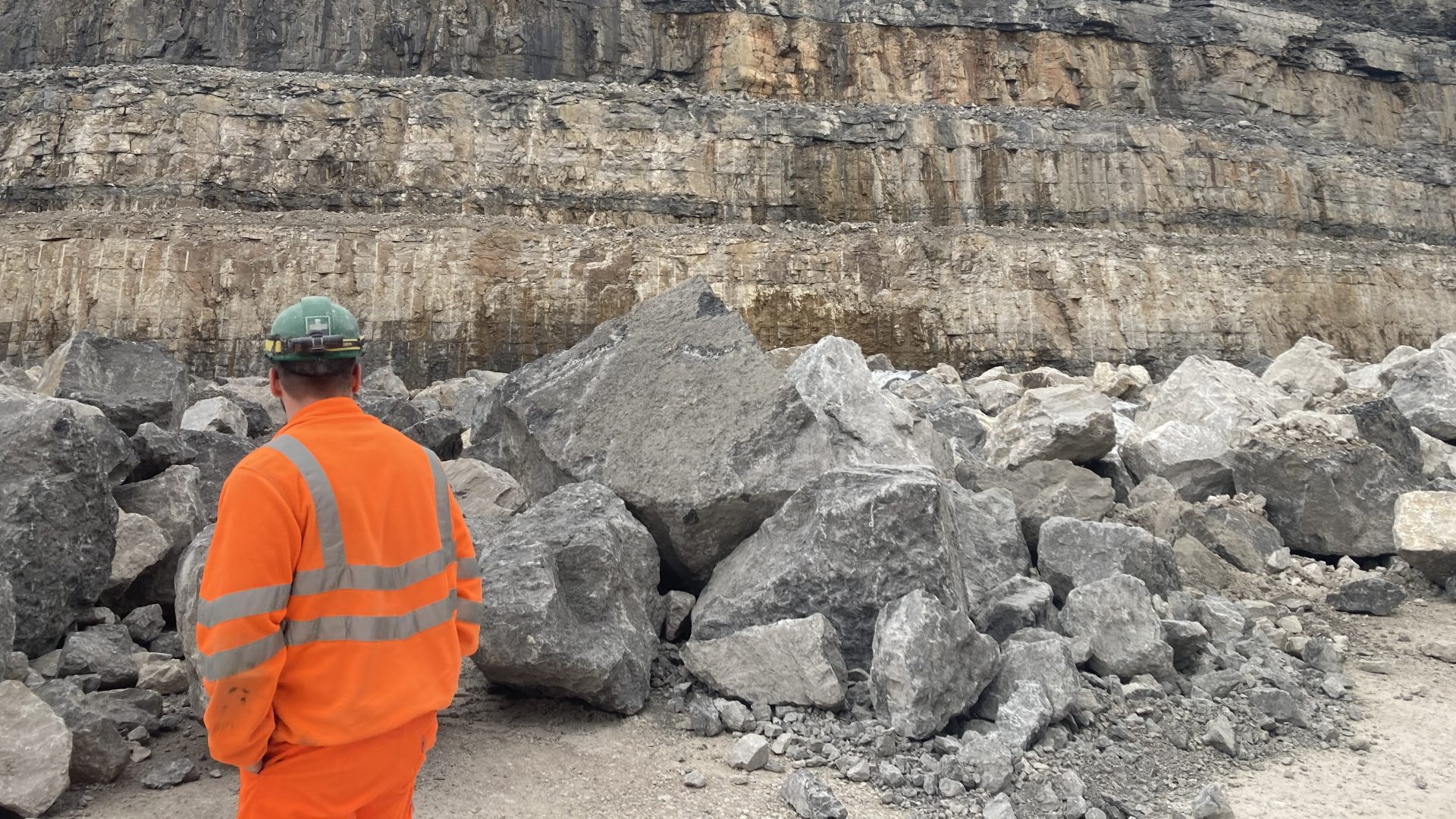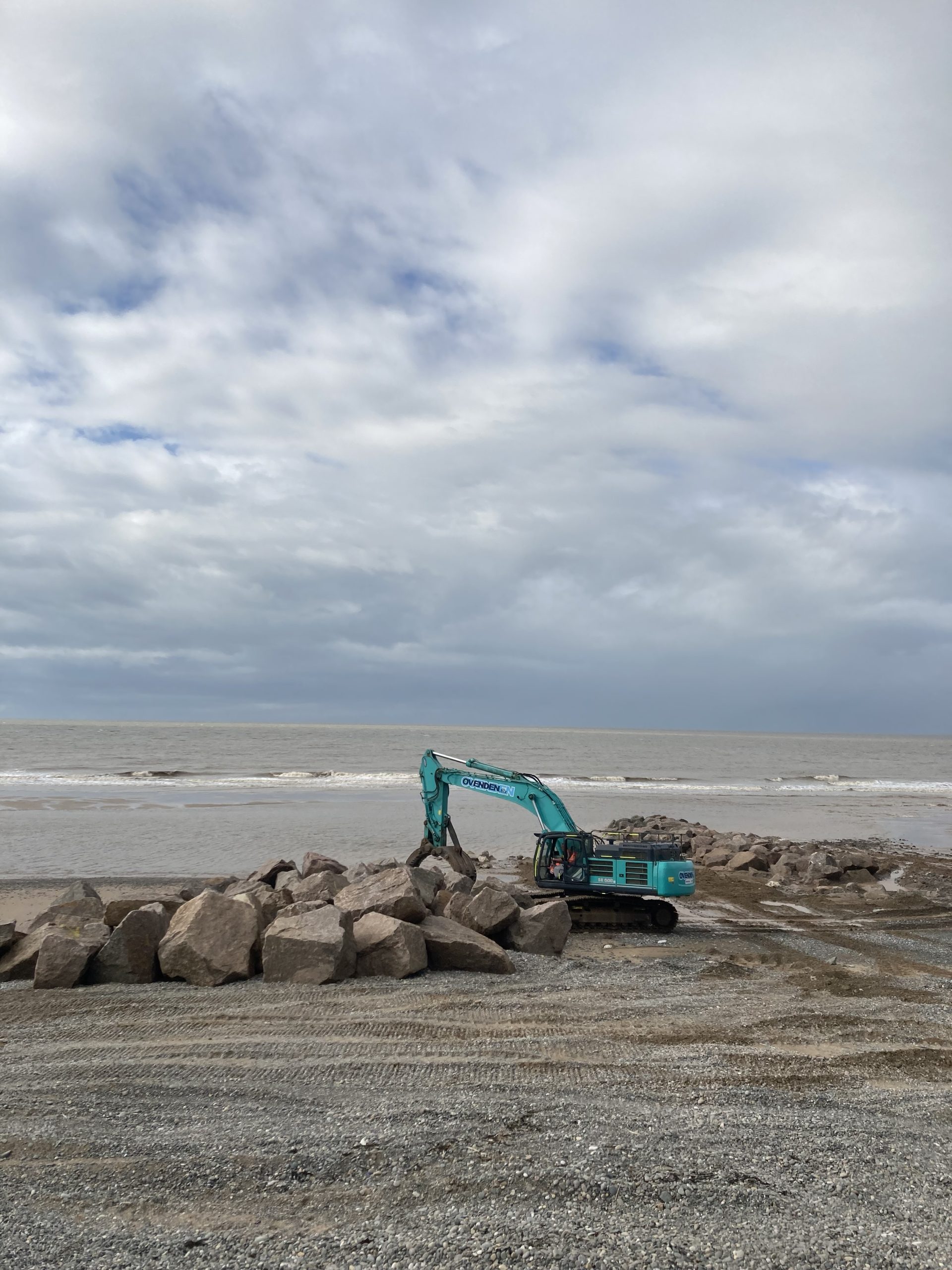Working in collaboration with Wyre Council (Lancashire Council) and Balfour Beatty, a monumental three-year coastal defence initiative at Rossall Beach has just surpassed its one-year milestone.
The project, the largest of its kind in the last decade in the north of England, commenced in April 2023 and is currently in its second phase.
Robust sea defence
The initial phase allowed the beach to remain open, emphasising the importance of minimal disruption to the public, and the primary focus now is on implementing a robust sea defence strategy, utilising Aggregate Industries’ rock armour solution to counter the challenges posed by rising sea levels, which are expected to increase by a further metre over the next 100 years.
This ambitious project involves the supply of 300,000 tonnes of aggregates to fortify the coastline stretching from Cleveleys to Fleetwood. As a tier one contractor, Aggregate Industries recognises the increasing importance of coastal defence in the face of rising sea levels.
Tom Randall, sales manager at Aggregate Industries, says:
“Rising sea levels, a consequence of climate change, pose a significant threat to coastal communities in the UK and in fact worldwide. As these levels continue to increase, the urgency for our robust sea defence solutions become paramount, emphasising the crucial role of proactive measures such as coastal barriers and sustainable infrastructure to mitigate the potential impacts on vulnerable regions.”

Colossal rocks
The rock armour, composing of 3-tonne to 10-tonne rocks, serves as a formidable barrier against erosion.
These colossal rocks, delivered on articulated wagons, are strategically placed to create rock groins that divide the ocean, safeguard the beach, and retain the sand.
The size and weight of the rocks necessitate collaboration between contractors and quarries, particularly in the loading and unloading processes.
Holme Park Quarries and Back Lane are vital partners in this venture, contributing to the complexity of the project. And without W Robinsons (Haulage) and P&L Barton (loading and selecting of Rock Armour at the quarry) the load and delivery of the material would not be possible – both are both specialised contractors which operate machinery capable of moving 10 tonne rocks. This type of product is not something that is kept in the quarry as a standard, so for such projects it is critical to have a close communication with the customers at an early stage and to start stockpiling for 3-4 years ahead of time, to ensure continuous supply over the course of such complex contracts.
Technical intricacies
The rocks, essential for rock armour, undergo rigorous testing to ensure their strength, weight, and density meet the specified standards. The blasting process during phase one not only placed stones beneath the beach but also elevated the beach level, providing an additional layer of protection against erosion.
The technical intricacies of the project involve extensive testing both at the quarry and on-site. Balfour Beatty’s technical team meticulously assesses the rocks for their weight, density, and interlocking capabilities, with the goal to achieve a perfect blend of rock sizes that will effectively interlock with the groins, forming a cohesive and resilient sea defence structure.
Considering the relentless force of the sea over the next 50 to 100 years, the importance of the sea defence project becomes evident. With a focus on flood prevention and the anticipated rise in sea levels, this project exemplifies the growing necessity for sustainable coastal defence initiatives. To date, this project underscores the significance of addressing these challenges proactively and perfectly showcases the technical expertise and collaborative effort to create a resilient and effective coastal defence system along the Lancashire coastline.




